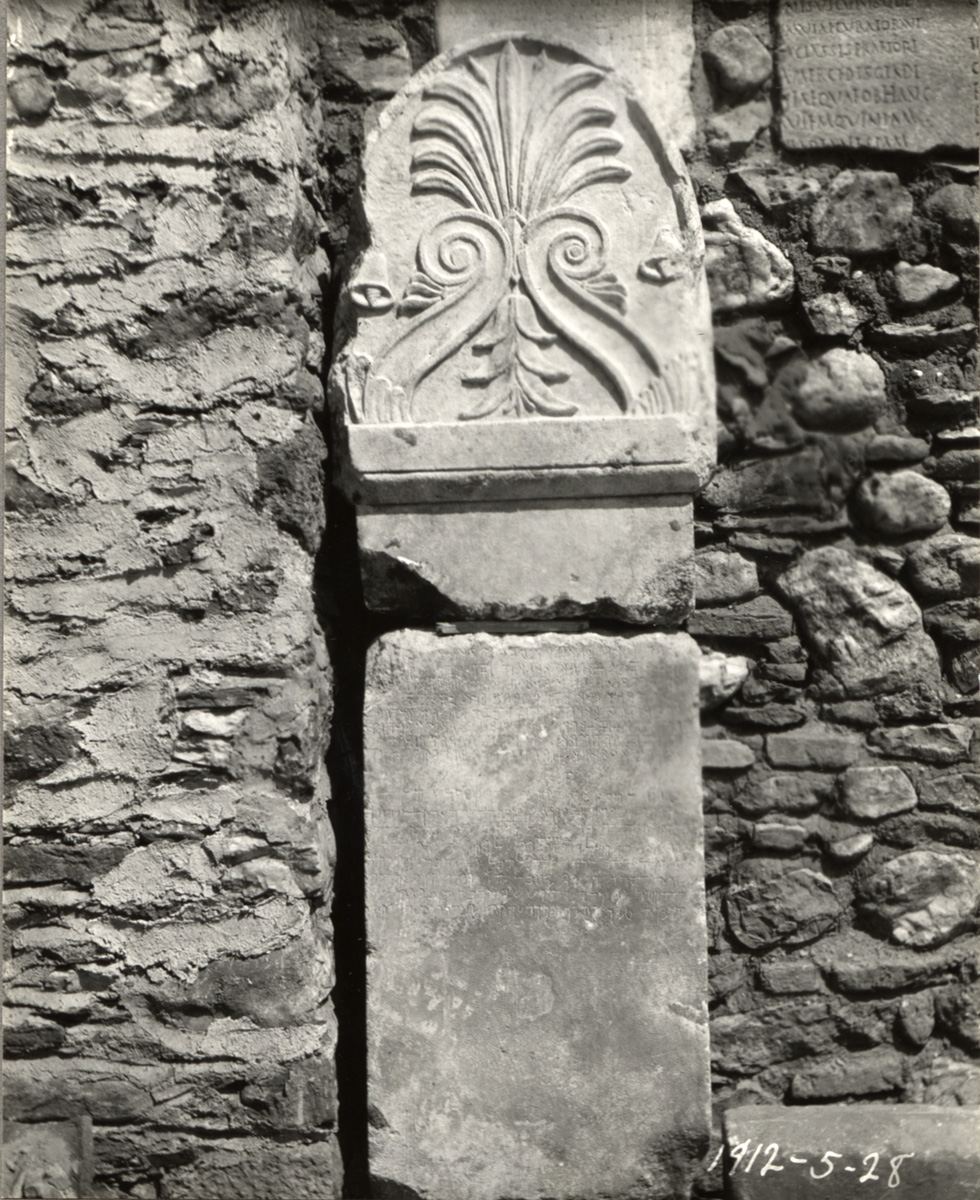-
 Part of Sepulchral Stele with Palmette
Part of Sepulchral Stele with PalmetteR2 Cat. 240
Sculpture
Marble, Stone
Ca. 420-400 BC (Late Lydian (Persian))
The stele has an oval finial, seven-petalled palmette on antithetic horizontal spirals, and downward-pointed small lotus. The anthemion projects slightly to the spectator's r. "The lateral projection ... was probably next to the dromos, whereas the s...
-
 Anthemion with Lydian-Aramaic Bilingual Inscription, Stele of Manes, Son of Kumlis
Anthemion with Lydian-Aramaic Bilingual Inscription, Stele of Manes, Son of KumlisR2 Cat. 241
Sculpture
Marble, Stone
394 BC (Late Lydian (Persian))
Two vertical half-volutes grow out of small acanthus chalices to support a seven-leaf simple palmette. Two small flowers (or ears of corn?) flank the central petal. Three large downward-pointed chalices are in the center below the palmette. Below the...
-
 Stele of Alikres, Son of Karos
Stele of Alikres, Son of KarosR2 Cat. 242
Sculpture
Marble, Stone
Early 4th C. BC (Late Lydian (Persian))
Funerary stele with Lydian inscription and rounded palmette anthemion, stele of Alikres, son of Karos.
Grayish "local" marble. Much reddish incrustation on face. Piece of marble broken off at top. According to Buckler (Sardis VI, 2, 49) bottom is origi...
-
 Stele of Menophila
Stele of MenophilaR2 Cat. 245
Sculpture
Marble, Stone
2nd or 1st C. BC (Hellenistic)
The pediment has three acroteria: the central one has two snakes pointing downwards; the other two each have one snake pointing upwards. The recessed niche has tapering sides parallel to the stele sides. The relief shows a woman standing in a Pudicit...
-
 Horseman Riding toward Altar
Horseman Riding toward AltarR2 Cat. 253
Sculpture
Marble, Stone
(Hellenistic)
The horseman, according to Buckler and Robinson, has a crescent behind his shoulders and therefore represents Mên (ibid.). He wears a short belted tunic with a few minimal diagonal folds. In his r. hand he may hold a short stick. The beginning of the...
-
 Funerary Stele, Latin
Funerary Stele, LatinR2 Cat. 262
Sculpture
Marble, Stone
1st C. BC (Hellenistic)
The stele is rectangular with a tenon at the bottom for insertion into another block. Represented on the relief panel are a standing man and woman, three children, and a servant, and in the center background a flat pillar which probably carried an ep...
-
 Stele with Orans
Stele with OransR2 Cat. 264
Sculpture
Marble, Stone
228 AD (Roman)
Set within a slight rectangular depression and standing on a narrow ledge is a standing woman, identified as Trophime in the inscription. In a frontal position, she raises her r. hand in prayer; the l. is at her side. She wears a chiton and a himatio...
-
The “Borgia Stele”
R2 Cat. 269
Sculpture
Marble, Stone
Ca. 480-470 BC ()
The controversy over the “Borgia stele” is reviewed with bibliography by Friis-Johansen (Attic Grave-Reliefs, 125, n. 2) who notes that the provenance is not known with certainty. Finati (Supposto Ulisse, 3f., text, pl. 10) states that according to a...
-
 Honorary Stele with Horseman
Honorary Stele with HorsemanR2 Cat. 270
Sculpture
Marble, Stone
Late Hellenistic or very early Roman Imperial (Hellenistic or Roman)
A horseman is shown riding to r. and approaching a round altar and tree. He wears a short tunic and a cloak attached with a brooch. His face is too damaged to determine whether or not he was bearded. A snake drinks from a patera (?) on the altar. A w...
